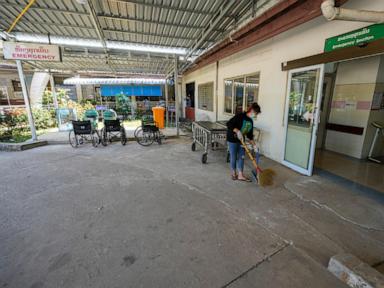
ORLANDO, Fla. — SpaceX launched its sixth test flight of its powerful Starship and Super Heavy rocket from its Texas facility Starbase on Tuesday, but called off an attempt to catch the booster back on land like it did on the previous launch, but was able to successfully refire one of the upper stage’s engines while in space. Liftoff occurred at 5 p.
m. EST from the company’s test facility in Boca Chica, Texas, marking the fourth test flight for Starship this year. The original plan was to recover the booster again back at the launch tower as it did in October, but on its way back down after stage separation, SpaceX mission control called out “booster offshore divert” and it ended up making a smooth return leveling out just above the waters of the Gulf of Mexico and then splashing down.
“It was not guaranteed that we would be able to make a tower catch today,” said SpaceX commentator Kate Tice during a live feed that had more than 5.5 million viewers at one point. “So while we were hoping for it, like we said, it was pretty epic on attempt one, but the safety of the teams and the public and the pad itself are paramount.
We are accepting no compromises in any of those areas.” The payload is a single plush banana, acting a zero-G indicator, and helping SpaceX do a run-through of payload approval processes required by the Federal Aviation Administration that will have to be gone through for future plans to fly payloads like the company’s Starlink satellites. “Bananas have been used for quick visual comparisons for quite some time, and our teammates thought it was time to bring the venerated yellow fruit to Starship,” Tice said ahead of liftoff.
Powered by 33 Raptor engines on the Super Heavy booster, it launches from the pad with more than 16 million pounds of thrust, which makes it the most powerful rocket to have made it into space. The last test flight occurred just five weeks ago, and marked the first time the Super Heavy booster attempted a recovery landing back at the launch site, returning to the launch tower nicknamed “Mechazilla,” and making a pinpoint thrust-in-place maneuver so a pair of support arms called “chopsticks” were able to safely capture it. “Starship’s fifth flight test was a seminal moment in iterating towards a fully and rapidly reusable launch system,” the company posted on its website.
It also had an improved suborbital flight of the upper Starship stage that made controlled landing halfway around the world in the Indian Ocean, although one that ended with an explosion. Tuesday’s test flight was not able to repeat the tower booster capture, but the mission still aims to add on reignition of one of the six upper stage Raptor engines in space as well as perform heat shield experiments and maneuver changes while on reentry in an effort to get that return trip to Earth more in control. The upper stage is flying the same suborbital trajectory, but since it’s launching in the early evening from Texas, it will mean landing amid daylight in the Indian Ocean where it will have turned morning already.
The added single-engine burn while in space paves the way for the deorbit burns that would be needed on future orbital missions. The upper stage is still feeling the intense heat of reentry and SpaceX continued to test out thermal protection experiments to find the safest options for future Starship recovery plans, and eventual reuse. “The flight test will assess new secondary thermal protection materials and will have entire sections of heat shield tiles removed on either side of the ship in locations being studied for catch-enabling hardware on future vehicles,” SpaceX posted.
“The ship also will intentionally fly at a higher angle of attack in the final phase of descent, purposefully stressing the limits of flap control to gain data on future landing profiles.” The plans for the seventh test flight include launching with upgraded features based on Tuesday’s results getting closer to a fully reusable heat shield. “Learnings from this and subsequent flight tests will continue to make the entire Starship system more reliable as we close in on full and rapid reusability,” SpaceX posted.
Company founder Elon Musk wants to use Starship for eventual colonization of Mars. “A fully reusable rocket with orbital refilling is the critical breakthrough needed to make life multiplanetary,” he posted on X. “For the first time in 4.
5 billion years.” The first two Starship launch attempts in 2023 ended explosively without achieving orbit, but it’s had three successful suborbital flights since with increasing improvements on both booster and upper stage reentry. The two stages of the rocket stand at 396 feet tall, and all test launches so far have been from the Boca Chica site, but SpaceX plans to build Starship launch sites at both Kennedy Space Center and Cape Canaveral Space Force Station.
The FAA and the Department of the Air Force both are heading up environmental-impact studies at both Space Coast sites. NASA has a vested interest in SpaceX succeeding with its next-generation rocket, a version of which is tasked with bringing the astronauts on NASA’s Artemis III mission down to the surface of the moon. That mission is still aiming for late 2026 but could be delayed if Starship isn’t at full speed by then.
.














